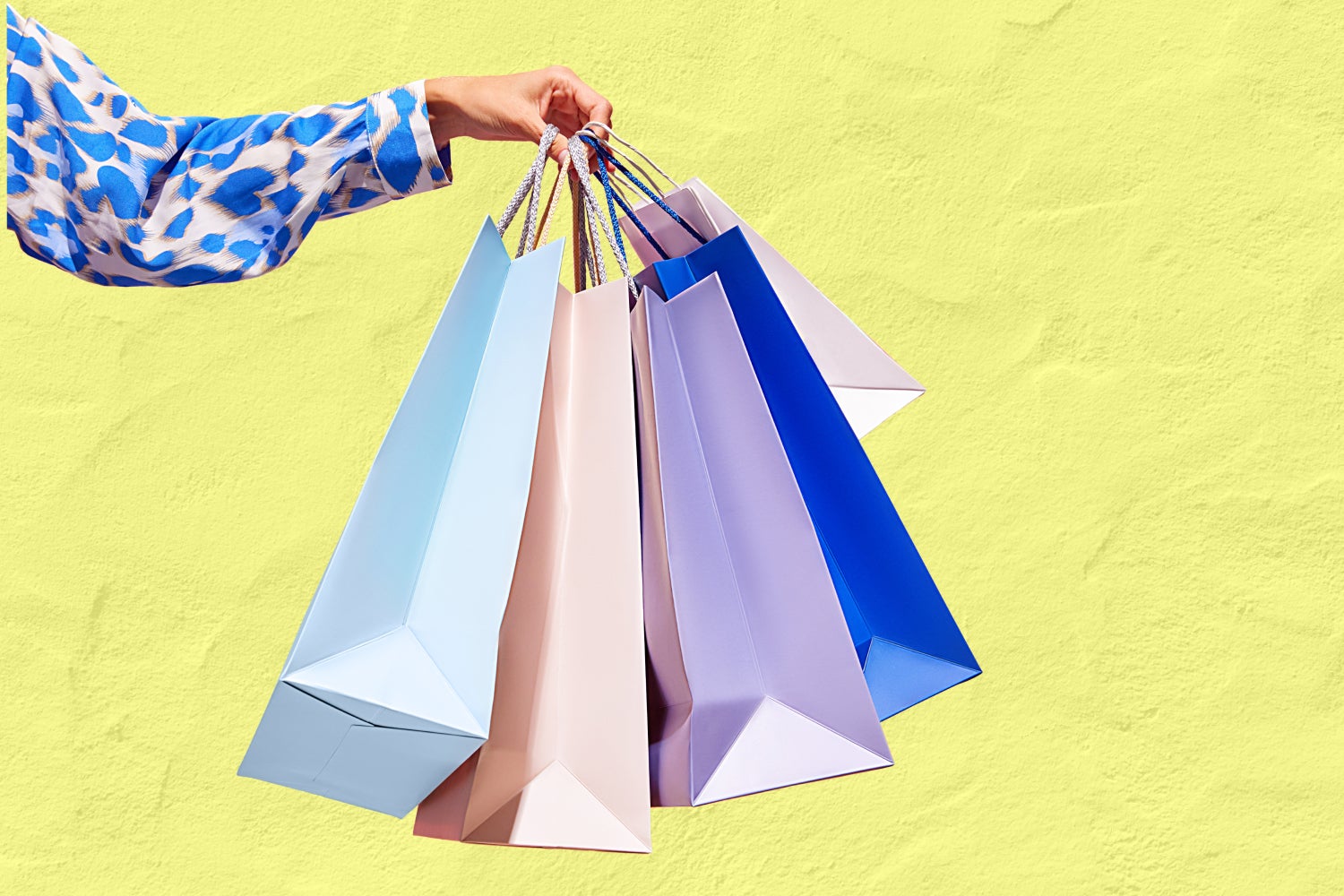Helping shoppers avoid greenwashing traps usually means calling out red flags—the tools companies deploy to prey on consumers’ desire to do better by the planet. Given that products emblazoned with “sustainable” labels sell better, it makes sense that marketers lean heavily on eco messaging to keep their wares moving. Peek under the hood, though, and you could find there’s not much there. That gulch—between what’s promised and what’s delivered—is where greenwashing thrives.
A little digging, however, can just as readily help you spot products and companies that are actually doing the work to minimize their impact on the Earth. “Much to many companies’ dismay, it actually is very doable,” says Lizzie Horvitz, the founder of Finch, an online guide for living sustainably, and co-creator of one5c’s signature product scoring system. “I won’t say it’s easy, but it’s very doable to figure out if a product is sustainable.”
All that matters because the stuff we buy accounts for anywhere from 16% to 26% of an individual’s share of planet-warming emissions, depending on whose math you follow. That means a couple of things: first, that the most sustainable purchase anyone can make is no purchase at all; and second, that the things we do add to our carts can make a difference—if we know what to look for.
So what, exactly, does that mean? Factors like the raw materials, manufacturing methods, and shipping emissions can vary greatly depending on what category you’re looking at. But there are also bright green flags that apply to everything from socks to suitcases. “This should be a fun exercise,” says Julia Collins, founder and CEO of Planet FWD, a technology platform that helps companies map and track their climate impacts. “Just lean into the joy and power you have to change the world through your purchases, and never underestimate the power of your everyday decisions.”
Here are five signs of sustainability that you can use as a checklist anytime you’re thinking about hitting the buy button.

✅ It has credible third-party certifications
A product’s Earth friendliness should be more than skin deep. Instead of vague terms like “sustainable” or “green,” look for third-party markers of environmental stewardship. “That’s the easiest filter: Is this labeled ‘eco-friendly,’ or is this actually certified?” says Horvitz.
From a purely emissions perspective, there are markers that stand out. The Climate Label Certified badge, for instance, only goes to companies who measure their greenhouse gases and have a demonstrated plan to reduce them. Outfits that earn this seal also commit to a budget for funding those efforts and publicly share their numbers. A Cradle-to-Cradle seal is similarly rigorous around emissions, but also factors in the work a company does to minimize waste and keep wares out of the landfill.
If a company is in good standing with the Science-Based Targets Initiative (SBTi) that’s also a positive sign, says Horvitz. SBTi is a collaborative climate-action group that helps companies set greenhouse-gas reduction targets that gel with the Paris Agreement, which is U.N.’s treaty to keep warming below 1.5 degrees C.
Being a B-Corporation can also be a decent signal. B-Corps meet higher-than-average standards for how they treat the environment, their employees, and the communities where they do business. Some critics and companies—notably Dr. Bronner’s—have said that the threshold for earning a B-Corp badge is too lax and encourages greenwashing.
But the flipside, Horvitz notes, is that it can help pull big players like Unilever and Danone in the right direction. “I’m a big fan of encouraging companies to do well, even if they’re not working perfectly,” she says. “When a Unilever can take the extra step to make products that are sustainable, that’s going to have a much larger impact than a small company that’s selling charcoal dental floss.”
There’s also an array of badges that apply to specific types of products. Finch has a full roster, but here are a few major players, too: The Global Organic Textile Standard (GOTS) seal marks fabrics that meet strict environmental standards; Forest Stewardship Council (FSC) certification ensures lumber, paper pulp, and other tree-grown materials like cork and rubber come from responsibly managed woodlands; a Leaping Bunny seal of approval appears on cosmetic, personal care, and home products that are cruelty free; and a Regenerative Organic Certified stamp is one of the strongest signs that a food or beverage is taking care of the ground it’s grown on.

✅ It comes in minimal, recyclable packaging
You can tell a lot about a company’s commitment to the planet by how it wraps its goods. Look for items with little—or even no—packaging. The gold standard is paper, paperboard, or cardboard made from recycled materials (FSC has a recycled certification).
If you encounter plastic packaging claiming to be compostable or biodegradable, be wary, Hortivz cautions. While bio-based plastics are derived from plants and not fossil fuels, many of them only break down in industrial-scale composters like the ones municipal systems use, which means you can’t toss them in your backyard heap. “It’s actually worse than something that’s recyclable, because you’re just putting it in the landfill,” she says.
Recyclable plastic should be a last resort, as product packaging makes up 40% of all plastic waste in the world. While there are no completely safe bets when it comes to whether or not a clamshell or box can go in the blue bin, plastic marked #1 or #2 are the most commonly accepted at municipal facilities.

✅ It’s made to last—and has a stellar warranty
Something can be made with the most responsible practices in the world, but if it’s poorly built or designed to be wasted? “That’s the worst thing you can do,” Horvitz says.
In short: Durability matters, particularly when you’re talking about things you’re likely to keep and use for a long time like kitchenware, furniture, or luggage. “The quality and the longevity of how long [a product] will serve you, that to me as a consumer is one of the most important things,“ says Liza Moiseeva, the Chief Marketing Officer at Commons, an app that coaches users on how to break the cycle of overconsumption.
An item’s longevity can be tricky to assess from the outside, but there are signals that a company’s confident in its goods. A long-term or lifetime warranty is probably the strongest sign, but the availability of replacement parts—like, say, new wheels for a suitcase—should also inspire confidence. The best warranties will focus on product repairs over replacements, which reduces waste. But even the simple fact that a firm is willing to replace a busted item for a new one still hints at durability. “It’s not something brands try to use as a greenwashing tactic,” says Moiseeva. “You have to stand by these things like your warranty promises.”

✅ There’s a plan beyond the landfill
If a company is thinking about sustainability, they’ll have answered the question “I’m done with this thing, now what do I do with it?” for you. “That is a really awesome signal that they’re being responsible, and they’re thinking about what happens next,” says Horvitz.
There are a variety of ways an outfit can plan for what happens to an item at its end-of-life. Some will offer a take-back program that allows them to reclaim and reuse raw materials; others might have a buy-back scheme and run a refurbished or secondhand marketplace; and some could go for the lightest lift, which is the simple act of opting to use materials that are readily and accessibly recyclable. “Say you’re choosing between two suitcases and one has a take-back program,” Collins says. “That’s a really good green flag.”

✅ The company is honest about its footprint
It’s become increasingly common for companies to publish impact reports—essentially corporate overviews of what they’re doing to be better stewards of the Earth. This is where you’ll find their reporting on greenhouse gas emissions, social responsibility, water stewardship, and worker welfare, among other benchmarks. You can usually find it linked in the footer of a company’s website under something like “sustainability” or nested into pages about their mission. If not, plunk “[company name] impact report” into your search engine of choice.
Give it a once-over and check for transparency and, crucially, candor. Horvitz says to look for specific goals (“100% of our production facilities will run on renewable energy by 2030”), clear markers of progress (“currently 60% of our facilities run on renewables”), and humility about their imperfections (“the energy mix of our local grid limits our ability to scale more quickly”).
That level of scrutiny is important, because impact reports can be largely about marketing—an indicator that the company believes you as the shopper care. “I wouldn’t call it a bright green flag; I think it’s a light green flag,” Collins says of the eco-dossiers. “The mere existence of an impact report should not be sufficient to build trust, but the absence of it would concern me.”

